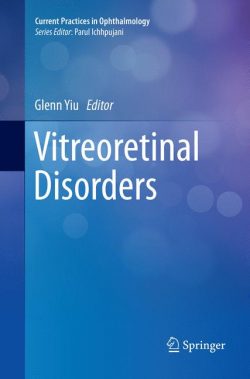As a degenerative disorder of the eye, keratoconus can cause substantial distortion of vision, with multiple images, streaking, and sensitivity to light all reported by patients. Keratoconus: Recent Advances in Diagnosis and Treatment updates ophthalmologists about the innovations that have occurred within the last decade, discussing the diagnostic imaging techniques that have been developed for keratoconus diagnosis, understanding of how examination techniques are related to the evolution of keratoconus, and how to indicate the different therapeutic tools that have been created for keratoconus over the last several years.
Additionally, fundamentals for new diagnostic elements, based on the mathematical, physical and biomechanical data are analyzed in depth for a better understanding of the essential diagnostic steps for the clinician to guide patients towards the most adequate therapeutic tool in the case. Modern keratoplasty techniques, assisted by femtosecond lasers or other devices, are also covered and these techniques, along with the emerging conservative treatments, have added to more precise control of the evolution of the disease.
20 Complications of Corneal Collagen Cross-Linking
“This is a technical operative textbook exploring the medical and surgical aspects of keratoconus. … Live intraoperative photos of actual microsurgeries is a plus. The OCT photos: before and after are good. This is a detailed step by step guide to treatment This book is authored by experts throughout the European countries, the US, and Middle East. All approaches and angles are addressed. I recommend this book to residents and fellows.” (Joseph Grenier, Amazon.com, April, 2018) Jorge L. Alió, MD, PhD, is professor and chairman of Ophthalmology at the Miguel Hernández University, Alicante, Spain, and formerly chairman of Ophthalmology at the University of Alicante, Spain. He has been appointed with several visiting professorships at universities in the United States and Europe. He has medical and doctorate degrees with first-class honors from the Complutense University of Madrid, Spain.
Dr. Alió s main research interests include refractive, lens and corneal surgery, ocular inflammation and preventative ophthalmology. He has (co-)authored over 640 original articles in peer-reviewed scientific journals and is author or editor of 74 books and over 230 book chapters. He has made over 1,700 national and international scientific presentations in ophthalmology congresses.
Dr Alió has received multiple awards and distinctions for clinical and research work, including the presidency of the International Society of Refractive Surgery (ISRS) from 2006-2008, LXIII chair of the Academia Ophthalmologica Internationalis, and the Barraquer Award (ISRS-AAO), among over 20 other international and national recognitions. He is also a member of 26 scientific societies and holds executive committee positions in numerous international ophthalmic organizations.
As a degenerative disorder of the eye, keratoconus can cause substantial distortion of vision, with multiple images, streaking, and sensitivity to light all reported by patients. Keratoconus: Recent Advances in Diagnosis and Treatment updates ophthalmologists about the innovations that have occurred within the last decade, discussing the diagnostic imaging techniques that have been developed for keratoconus diagnosis, understanding of how examination techniques are related to the evolution of keratoconus, and how to indicate the different therapeutic tools that have been created for keratoconus over the last several years.
Additionally, fundamentals for new diagnostic elements, based on the mathematical, physical and biomechanical data are analyzed in depth for a better understanding of the essential diagnostic steps for the clinician to guide patients towards the most adequate therapeutic tool in the case. Modern keratoplasty techniques, assisted by femtosecond lasers or other devices, are also covered and these techniques, along with the emerging conservative treatments, have added to more precise control of the evolution of the disease.
Updates ophthalmologists about the innovations that have occurred within the last decade
Discusses diagnostic imaging techniques that have been developed for keratoconus diagnosis, understanding of how examination techniques are related to the evolution of keratoconus, and how to indicate the different therapeutic tools that have been created for keratoconus
Analyzes fundamentals for new diagnostic elements based upon mathematical, physical, and biomechanical data





